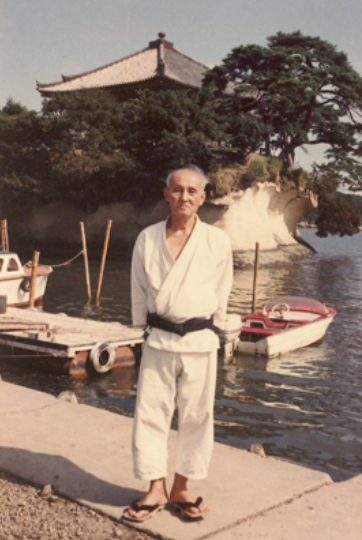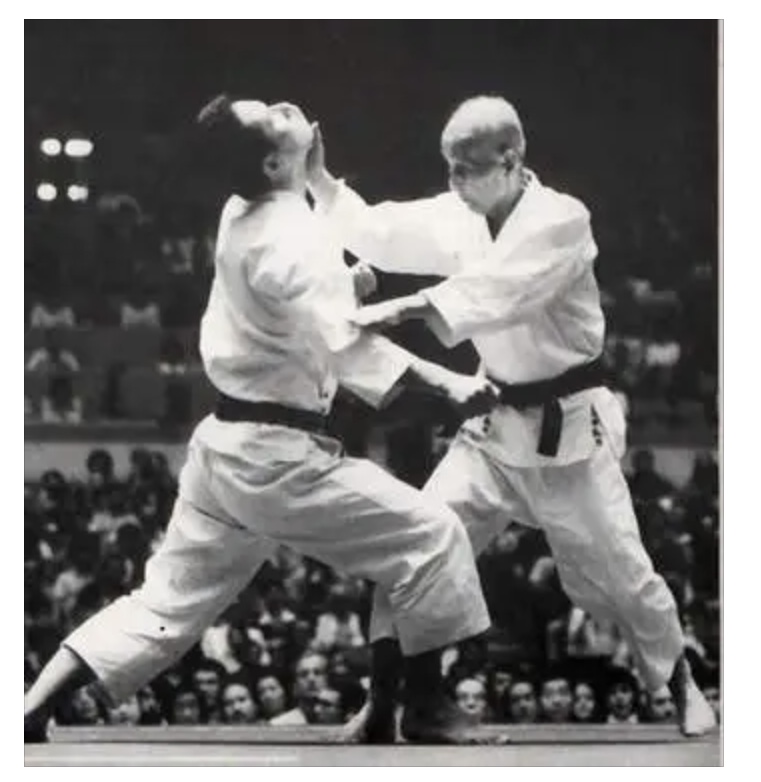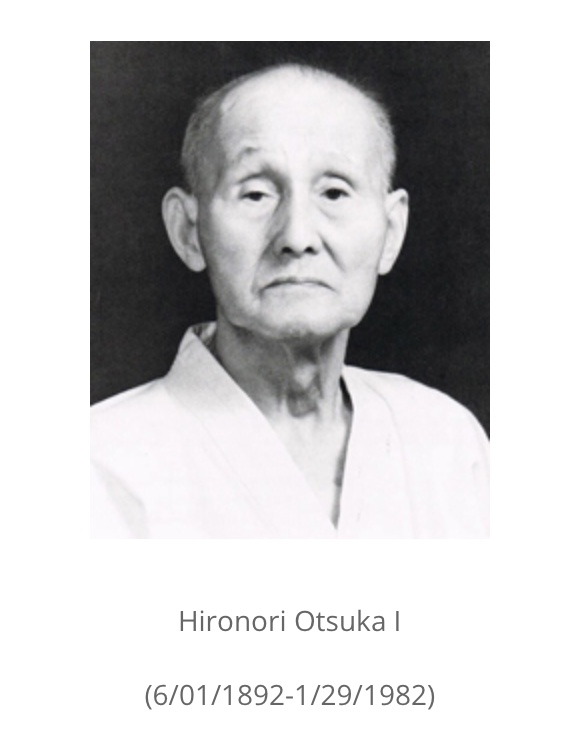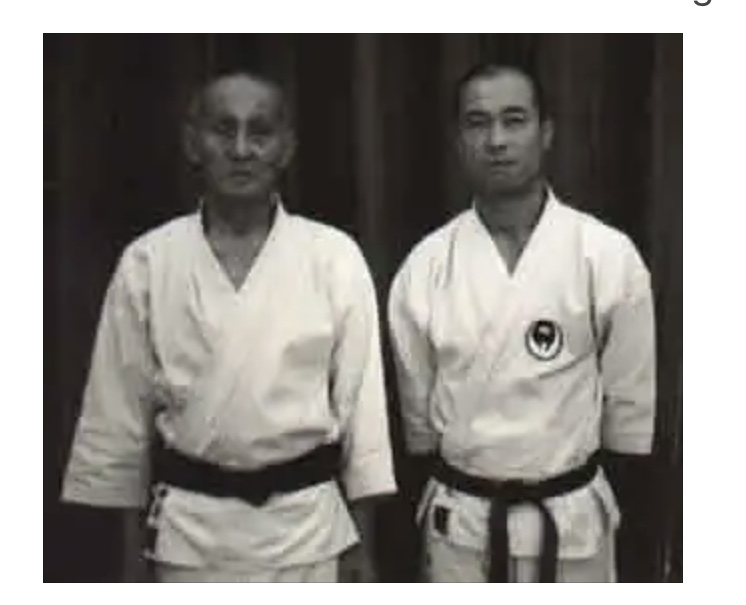History of Wado-Ryu Karate

Welcome to the History of Wado-Ryu Karate presented by the World Budo Alliance. In 1939, Hironori Otsuka established Wado-ryu. Which translates to “the way of harmony” in Japanese. Most important is that there is a strong emphasis on harmony and peacefulness of mind.
Whereas most styles of Karate focus on powerful attacks, Wado practitioners seek to evade blows. Therefore students learn to shift their bodies to avoid or reduce the impact of blows. And strikes are incorporated as a counter-attack method.
So unlike most other Karate styles, Wado also incorporates Jujitsu-style techniques such as joint locks and throws. And the stances are mostly natural and students learn 15 kata.
History of Wado-Ryu Karate
Most of all it is extremely important to understand that the history of the style and the life of our founder are intertwined. And as his lifelong martial arts journey and accumulation of knowledge is what inspired his beloved system. Therefore we can not tell one story without telling the other.
The founder of Wadō-ryū, Hironori Ōtsuka, was born on 1 June 1892 in Shimodate, Ibaraki Prefecture, Japan.
In 1898, Ōtsuka began practicing koryū jujutsu under Chojiro Ebashi. From 1905–1921, he studied Shindō Yōshin-ryū jujutsu under Tatsusaburo Nakayama. Ōtsuka’s extensive study of jujutsu. And this would greatly influence his later perception of “Shotokan”, in those days simply called Karate.
Therefore in 1922, Ōtsuka met the legendary Gichin Funakoshi (who is known as “The Father of Modern Karate”, and the founder of the style Shotokan) at a sports festival in Tokyo. Firstly, Funakoshi had been invited from Okinawa by the Japanese Ministry of Education to give a demonstration of what at the time was known as “China Hand (唐手)”. And would later be renamed “Empty Hand (空手)” by Funakoshi, mostly for political reasons during Japan’s impending war with China. The words when spoken, are both pronounced “Karate”.
Ōtsuka was very impressed with this Okinawan style of fighting. And met Funakoshi after the event to discuss martial arts for hours. Soon after he began to train in “Karate”. Most important in 1924, Ōtsuka became one of the first students promoted to black belt in karate by Funakoshi. And Ōtsuka rose to be one of Funakoshi’s head instructors, and trained closely under him for almost a decade.
History of Wado-Ryu Karate

Therefore to broaden his knowledge of Karate, Ōtsuka also studied with other prominent masters such as Kenwa Mabuni of Shitō-ryū and Chōki Motobu, the notorious street fighter from Okinawa. And it is believed that from these two men that Master Ōtsuka learned and began to use “Kumite”, or sparring, with other students at the Tokyo University Karate Club.
Important is that this is something that Funakoshi was greatly opposed to. Most of all he saw it as barbaric to use Karate on someone else outside of a self defense situation. Ōtsuka however believed that without testing your techniques and ability, you would have no true way of being effective. This disagreement, coupled with many other conflicting ideas led to the two men’s split in the mid 1930’s.
Therefore now without a teacher, and highly motivated Ōtsuka set out to develop his own way. Thus combining all that he had learned from his teachers and approximately 40 years of experience.
And in 1938 , he registered his style with the Dai Nippon Butoku Kai under the name of “Shinshu Wadoryu Karate-Jujutsu.”
Therefore soon after, however, this was shortened to “Wadō-ryū” (和道流). And in 1938, the Dai Nippon Butoku Kai awarded Ōtsuka the rank of Renshi-Go, followed in 1942 by the rank of Kyoshi-Go. Hence in 1944, Ōtsuka was appointed Japan’s Chief Karate Instructor. It was during this time that Tatsuo Suzuki became a very promising student under Ōtsuka, becoming the highest ranked Wadoka within only a decade of training. Importantly Suzuki Sensei would go on to found the organization of Wado International Karatedo Federation.
Hironori Ōtsuka
Firstly, around 1950, Jiro Ōtsuka (the founder’s second son) began training in Wadō-ryū while in his adolescent years. In 1952, the Wadō-ryū headquarters (honbu) was established at the Meiji University dojo in Tokyo. And in 1955, Ōtsuka published “Karatejutsu no Kenkyu.” And wrote a book expounding his style of karate. In 1963, he dispatched Suzuki, along with Toru Arakawa and Hajimu Takashima, to spread Wadō-ryū around the world.

Secondly in 1964, the Japan Karate Federation (JKF) was established as a general organization for all karate styles. Wadō-ryū joined this organization as a major group. In 1966, Ōtsuka was awarded the Order of the Rising Sun, Fifth Class by Emperor Hirohito. Hence for his dedication to the introduction and teaching of karate. On 5 June 1967, the Wadō-ryū organization changed its name to “Wadōkai.”
an in 1972, the President of Kokusai Budō Renmei, a member of the Japanese royal family, awarded Ōtsuka the title of Meijin.
History of Wado-Ryu Karate
So in 1980, as the result of a conflict between Ōtsuka and the Wadōkai organization, he stepped down as head of the organization. And Eiichi Eriguchi took over as head of Wadōkai . Therefore on 1 April 1981, Ōtsuka founded the “Wadōryū Karatedō Renmei”.
However he stepped down due to failing health after only a few months and retired as head of the Renmei. An his son, Jiro Ōtsuka, took his place. On 29 January 1982, Hironori Ōtsuka passed away at the age of 89.
And in 1983, Jiro Ōtsuka succeeded him as grandmaster of Wadō-ryū. Thereby the younger Ōtsuka changed his name to “Hironori Otsuka II” in honor of his late father.
And after years of conflict, Suzuki left the Renmei and founded his organization in 1990. On 26 June 2015, Master Otsuka II followed his wife and father, and passed at the age of 81. He has been succeeded by his son Kazutaka Otsuka, who has taken the name “Hironori Otsuka III”.
History of Wado-Ryu Karate - Founding
The “Wado” story officially began in May 1934 when Hironori Ohtsuka registered his own style of Karate, which he called “Wado Ryu.” And was at this time recognized as an independent style. However, its origins were developed by Ohtsuka’s continuous study of all martial arts. Most of all formulating the “Wado” techniques by combining his own innovations and natural movements found in the other martial arts.
Philosophy

The name Wadō-ryū has three parts: Wa, dō, and ryū. Wa means "harmony," dō means "way," and ryū means "school". Most of all harmony should not be interpreted as pacifism. Therefore it is simply the acknowledgment that yielding is sometimes more effective than brute strength.
First, from one point of view, Wadō-ryū might be considered a style of jūjutsu rather than karate. Hironori Ōtsuka embraced jujitsu and was its chief instructor for a time.
And when Ōtsuka first registered his school with the Dai Nippon Butoku Kai in 1938, the style was called "Shinshu Wadō-ryū Karate-Jūjutsu." A name that reflects its hybrid character.
And Ōtsuka was a licensed Shindō Yōshin-ryū practitioner and a student of Yōshin-ryū when he first met the Okinawan karate master Gichin Funakoshi. But after having learned from Funakoshi, and after their split, with Okinawan masters such as Kenwa Mabuni and Motobu Chōki, Ōtsuka merged Shindō Yōshin-ryū with Okinawan karate. The result of Ōtsuka's efforts is Wadō-ryū Karate.
And to the untrained observer, Wadō-ryū might look similar to other styles of karate, such as Shito ryu or Shorin ryu. Most of the underlying principles, however, were derived from Shindō Yōshin-ryū, an atemi waza focused style of Jujutsu.
Evading or escaping
Most of all a key principle in Wadō-ryū is that of tai sabaki (often incorrectly referred to as 'evasion'). The Japanese term can be translated as "body-management." And refers to body manipulation so as to move the defender as well as the attacker out of harm's way. Therefore a way to achieve this is to 'move along' rather than to 'move against.' Most important harmony rather than physical strength.
And modern karate competition tends to transform Wadō-ryū away from its roots towards a new generic karate that appeals more to the demands of both spectators and competitors.
While the core principles (at least with regard to transmission of body weight into punches) of turning on the heel remain in Wado, as it is the fastest way to push the hips in the direction of attack, the progression to the ball of the foot is a hallmark of the style.
Thank you for reading the History of Wado-Ryu Karate. The history of very detailed and not all included ere. However I believe this gives a solid overview of this very important martial art.
Researched by: Sensei Kara Borshuk
Edited by Grand Master Art Mason